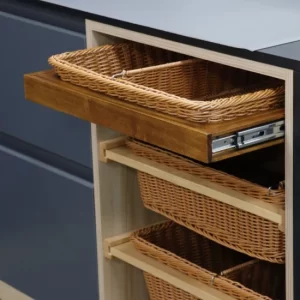The Best Water-Saving Fixtures for Your Bathroom

The bathroom can often be one of the highest energy consuming rooms in a home. From getting ready for school and work each morning to long grooming sessions before an outing with friends on weekends, many families use up a lot of energy here.
Estes Services offers several eco-friendly bathroom fixtures with the WaterSense label that can help your household to reduce water consumption by installing eco-friendly fixtures in your bathroom. They include:
1. Low-Flow Faucets
Have you been browsing home improvement store bathroom fixture aisles lately and seen low flow showerheads and faucets labeled with this designation? They deliver what feels like full volume water while cutting costs associated with water, heating, sewage disposal and environmental impact.
Modern low-flow toilets and showerheads are specifically designed to reduce unintentional water waste, which helps both you and the environment by saving money while conserving energy used to heat extra water. This lowers both your bill and environmental impact by conserving energy used to heat it.
Low-flow faucets come in all styles and price points, giving you plenty of options to add style without breaking your budget. Or you could treat yourself to an electronic sensor faucet which turns on and off with just the touch of your hand to limit how much can be poured at once to prevent wasteful overfilling, and keep your hands from becoming wet, keeping them cleaner and free of germs.
2. Water-Efficient Toilets
Upgrading bathroom plumbing fixtures gives your Atlanta home an updated appearance while creating savings in the form of future savings. According to SSWD, toilets are one of the biggest water consumers within your home – selecting an EPA-certified high efficiency model will save both water and money.
Current legislation mandates all new toilets be water-efficient with at least 1.6 GPF of flush capacity, making dual-flush models ideal for upgrading existing thrones. They use less water to flush liquid waste while still meeting solid waste needs and come equipped with either an elongated or round front bowl design for optimal use.
Substituting water-efficient toilets could save up to 13,000 gallons per year – an astonishing amount that will have an enormous positive effect on the environment. Plus, modern models don’t sacrifice performance for efficiency; look out for WaterSense labels when searching for models suitable for your home!
3. Energy-Efficient Lighting
Many homeowners are in search of ways to conserve energy and lower their electricity bill. From turning off lights when not present in a room to unplugging appliances that are no longer in use, there are numerous simple changes you can make at home to save energy and reduce electricity usage.
However, to successfully reduce energy costs you need to invest in lighting that is both energy-efficient and eco-friendly. Energy-efficient light bulbs are more affordable than their traditional counterparts and help lower utility bills without compromising lighting quality.
For the highest energy-efficient light bulbs, look for bulbs bearing the ENERGY STAR label. These energy-saving light bulbs use less electricity than conventional options while being designed to withstand exposure to the elements – perfect for outdoor and indoor use! Furthermore, mercury-free options can make eco-friendly choices an attractive addition to any home.
4. Touchless Faucets
Touchless faucets have become an increasingly popular alternative to traditional ones in kitchens and bathrooms alike. Employing active infrared technology, these touchless fixtures activate when your hand or elbow comes within range of their sensor and automatically turn off when you move away.
Many people leave their faucets running while washing their hands, which wastes water and can drive up utility costs dramatically. A touchless faucet turns off as soon as your hand leaves its sensor and saves hundreds of gallons over time.
Touchless faucets typically consist of various internal components that vary by model, such as a spout, sensor window, solenoid valve, power source and waterproof connector. DC 6V batteries or low voltage AC transformer current are usually used to power these components and operate the water valve; some models may even require access to an electrical outlet nearby depending on their specific design.






